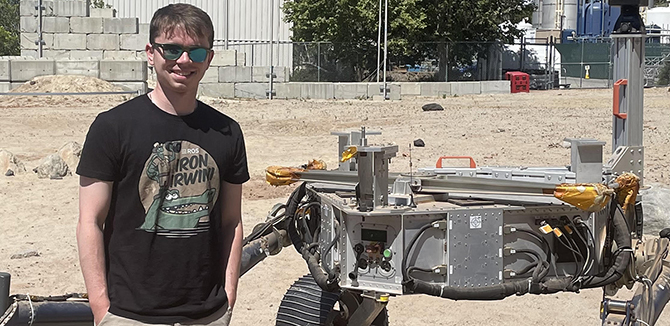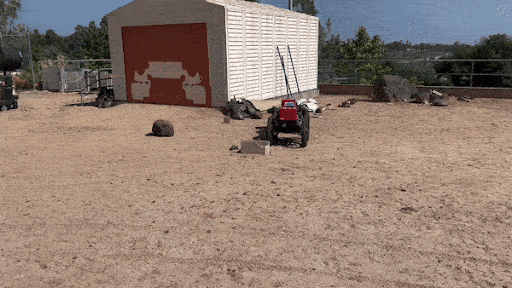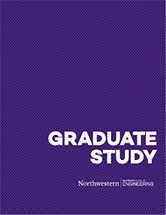Navigating Hazardous Terrain at NASA's Jet Propulsion Laboratory
Henry Buron (MSR '24) looks back on his summer interning at JPL and the experiences he had working alongside engineers creating robots for space exploration.

In the foothills of California's San Gabriel Mountains is a fenced-in area meant to mimic the terrain of Mars. At roughly half the size of a soccer field, the Mars Yard at NASA's Jet Propulsion Laboratory (JPL) features a collection of slopes and rocks designed for rovers to drive in, climb on, and maneuver around.
The yard is home to two siblings of rovers currently in operation on Mars, and it is a testing ground for new innovations created for space exploration.
This past summer, it also was a workspace for Henry Buron (MSR '24).
Buron worked as a robotics software intern in the robotic mobility group at JPL. His primary focus was to develop Robot Operating System (ROS) C++ packages to support the control of a mobile robot designed to navigate harsh terrain and visually-degraded environments.
"JPL is advancing humanity’s reach in the solar system by building some of the most innovative and advanced robots in the world," he said. "I was excited to learn from the people who are actually sending robots to other planets."
The robot Buron worked with is meant to be used for exploration or reconnaissance in areas humans can not access. It features a unique design with two rigid bodies joined by a single linkage. The connection points between the two bodies are actuated, meaning the robot can change its configuration based on its task or environment. If the robot needs more stability, it can operate in a side-by-side style. If a slimmer profile is necessary, it can turn so one body follows the other.

Buron developed a simulation-based method to assess the robot's risk of tipping in any given state, an algorithm that generates path projection lines for the robot, and a kinematic configuration manager to let the robot change how it is configured during an operation.
Beyond working on code for the robot and using hardware to test his algorithms, Buron spent as much time as he could learning from others during his internship. JPL hosts a variety of lectures and presentations that interns are invited to attend. It was there where he heard from the lead engineer for the Ingenuity Mars Helicopter, as well as from an astronaut who worked on the International Space Station.
"I was surprised by the amount of really cool and accomplished people everywhere, and how willing they were to talk with interns," Buron said. "For example, at one lunch, I talked to one of the engineers who helped fix the communication issues with Voyager 1 this summer."
Getting industry knowledge and doing hands-on learning like he did at JPL is what drew Buron to MSR. After he graduates, Buron will join a robotics startup named Swarmbotics AI, a company that builds autonomous unmanned ground vehicles. As he finishes his time in the program this quarter, Buron sees how it prepared him for the internship and for life after MSR.
"I have become a much more capable and resourceful engineer," he said. "MSR has taught me how to approach problems and learn from them."

